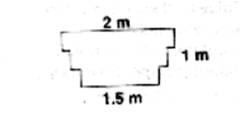News and Articles
Progress on drinking water and sanitation - Special focus on sanitation
Posted on 17 Sep, 2009 01:50 PM This report found on the World Health Organisation site has been brought out by the WHO/UNICEF Joint Monitoring Programme for Water Supply and Sanitation, that tracks the progress on target 10 of the Millennium Development Goals (MDGs), which is "To halve, by 2015, the proportion of people without sustainable access to safe drinking water and sanitation".
2008 being the International Year of Sanitation, the report highlights the importance of sanitation, as being the crucial stepping stone to health , which offers:
Water supply and sanitation - Assessment - A WHO-UNICEF sponsored study (2002)
Posted on 17 Sep, 2009 11:07 AMThis report includes the findings of a study by the Planning Commission sponsored by the World Health Organisation and The United Nations Children's Fund (UNICEF) that conducted an assessment of the water and sanitation situation in India in 2002. The assessment revealed that:
Rural water supply - Planning Commission
Posted on 17 Sep, 2009 10:58 AMThis article on the Planning Commission site presents a review of the government figures regarding coverage of all rural habitations in the country with good drinking water supply.
Rural Water & Sanitation Programmes
Posted on 16 Sep, 2009 05:00 PMNot only money, villagers need knowledge too!
Surekha Sule
| The debate on Centralised Vs Decentralised solutions to the rural water problem is endless. There are of course advantages and disadvantages of both the systems. Nevertheless, both the options need people's participation at the local level in pre as well post project stages and importantly for sustainable running of the scheme. So whether the source of water is a dam water pipeline or local water resource, people have to be prepared for making informed choices by unveiling entire gamut of knowledge and information. Recognizing this need, Gujarat-based NGO Utthan set up a People's Learning Centre for Water & Sanitation (PLC-Watsan) which has been raising grass root level awareness and also facilitating lateral spread of information since 2006. |
"We have been drinking brackish water not knowing that it is not water but poison that we have been consuming all these years till Utthan's PLC visited us and made us aware of our drinking water problem. Till then we took it in our stride all the water related problems – our children fell sick, most of us suffered from joint pain (due to high fluoride content in water)"
- Bhagwanbhai from village Boda (Bhavnagar district)
How to measure water percolation rate
Posted on 15 Sep, 2009 04:53 PMTo measure how fast water percolates into the soil, you need to measure the time it takes for a specific amount of water to soak into a specific area of soil. The easiest way to do this is to get a length of cylindrical pipe that is sharp enough to push (or hammer) into the soil at one end. Mark it with two lines – one is the line to which you insert it into the soil, and the other is the line to which you fill the water.
How to measure slope and mark contours
Posted on 15 Sep, 2009 04:43 PMYou can measure slope by making use of gravity. Find a protractor for measuring angles. Attach a straw across the straight edge of the protractor.
Watershed scale planning- Application of rainwater harvesting techniques
Posted on 15 Sep, 2009 04:20 PMThe first project was conducted by the BAIF Development Research Foundation in the Hassan District of Karnataka. They created a linked network of 350 farm ponds covering 700 hectares of the watershed.
How to create a farm pond for water storage
Posted on 15 Sep, 2009 03:56 PMThe ideal farm pond should be dug into the ground in a naturally low-lying area. Some of the soil that is removed can be used to construct an earthen berm around the pond, which should be planted with trees and grasses for stability. The shade and wind protection provided by the raised mound and vegetation will reduce evaporative losses.
Groundwater recharge structures
Posted on 15 Sep, 2009 03:41 PM Where conditions are favorable, it is better to recharge the groundwater than to create surface ponds for storage. This approach minimizes evaporative losses, and often improves water quality. Recharge structures can be anything from a small pit simply dug into the soil, to a borewell converted for recharge. Recharge structures are useful in sloping landscapes where the water would not otherwise have time to sink into the ground before running off.
Where conditions are favorable, it is better to recharge the groundwater than to create surface ponds for storage. This approach minimizes evaporative losses, and often improves water quality. Recharge structures can be anything from a small pit simply dug into the soil, to a borewell converted for recharge. Recharge structures are useful in sloping landscapes where the water would not otherwise have time to sink into the ground before running off.
The how and why of tank restoration
Posted on 15 Sep, 2009 02:19 PMWhere possible, it is much more cost effective to restore existing tanks, than to build new tanks. Restoration can involve silt removal to increase the storage capacity of the tank and reduce evaporative loss. The silt can be used to restore the earthen bund, and any remaining silt can be applied to nearby farmland. The outflow structure can also be improved.